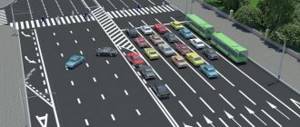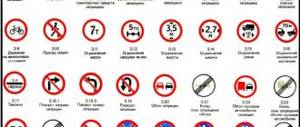Any modern car has a passive safety system, which includes (depending on the configuration):
- seat belts and their tensioners;
- airbags;
- active head restraints;
- emergency battery breaker and other elements.
The most effective among them is considered to be an airbag, which protects the driver and passengers from injury as a result of their physical contact with parts of the interior and body of the car during an accident.
What are airbags?
Airbags are elastic fabrics or other materials that are tightly packed in different areas of your vehicle. Most cars have airbags on the front dashboard, and many cars have airbags along the side of the car. These bags are compressed and stored in a small area. When an accident occurs , they provide a cushioning system for the people in the car to help prevent them from being thrown out in the event of an accident. While it won't always save you from serious injury or death, there are many situations where occupant cushioning can make a lot of sense.
The first Airbag design was patented in 1951, but the auto industry was slow to adopt the technology until the 70s.
What's next?
So, over the past 30 years, airbags have gone from being a fancy accessory for expensive cars like the Mercedes-Benz S-class to becoming an absolutely mandatory attribute of any modern car, including in Russia (with rare exceptions). A modern driver will think ten times before getting into a car without airbags.
One can only guess how pillows will develop in the future. Most likely, they will simply become even more widespread: production technology will gradually become cheaper, and the day is not far off when we will see budget cars with a full set of airbags, including knee and curtain airbags. Perhaps designers will pay more attention to the safety of rear passengers, and, of course, Volvo's pedestrian protection technology should be widely used.
| The ten safest cars based on EuroNCAP crash tests in the review by Kolesa.Ru. |
How do they work?
- Each individual airbag is inflated and packaged in a compartment located in the dashboard, steering wheel, seat or other location.
- The front Airbag includes a large nylon bag that inflates and deflates quickly in the event of a serious frontal collision.
- Airbag deployment is monitored by sensors that detect the occurrence and severity of an accident. When the controller determines that the Airbag needs to be deployed, the system starts the inflator unit, which in turn burns chemicals that produce a lot of inert gas to inflate the bag.
- When the bag inflates, it rips open the covers on the dashboard, floating in front of the passenger. At the same time, the head and upper part of the passenger move with considerable force towards the inflated bag. When the occupant's head comes into contact with the airbag, it begins to deflate through the vents in the base. This softens the forward movement of the head. The entire process happens in the blink of an eye, in about 100 milliseconds.
- There will be a lot of smoke, dust and noise during deployment, and the passenger may not be aware that the airbag has deployed. This is fine.
Other causes of malfunctions and their solutions
Let's analyze the main causes of problems and malfunctions associated with the car's security system, and present ways to solve them:
- Poor connection of elements in the PB electrical circuit or lack of contacts. Another reason for the constant light of the malfunction indicator is poor connection of the system connectors. The solution is to check all contacts, as well as the quality of the connection.
- Failure of the shock controllers is another common reason for the lights on the dashboard. Perhaps they are not connected well. Check not only the quality of the connection of network elements, but also the connectors. What to do if all contacts are working? If the indicator on the dashboard continues to indicate a malfunction of the shock sensors, it means that these devices need to be replaced as soon as possible. Otherwise, the presence of PBs in your car can be considered useless - they will not react to an impact. How to check the airbag sensor with a multimeter is described in the instructions for the device.
- The next common cause of car security system malfunction is faulty contact in the doors. In most cases, this is a consequence of repair work or replacement of car doors. During this, as a rule, the connectors are disconnected. Therefore, the next time they are connected, all contacts must be checked. If the indicator in this case continues to light even after reconnection, then there is only one way out of the situation - to reset the memory of the security system control device.
- Another cause of malfunction is moisture ingress. It may end up on the contacts of electrical components or on seat belt buckles. This leads to either poor contact or even a short circuit. What to do with such a problem? The place where you find moisture must be thoroughly dried.
- Incorrect functioning of the control unit, its failure. The reason may be simple - the contacts have moved away. But if the essence of the malfunction lies in the device’s board, then the problem can be solved radically - by replacing this unit.
- Safety elements. If such devices fail, the indicator on the dashboard will also light up. The problem is quite common, since not many car owners pay due attention to fuses.
- Replacement of control panel or car seats. This can also lead to a malfunction of the machine's security system. The reason is that when replacing, the integrity of the electrical wiring may be damaged. In particular, connection points may be affected.
- In some cases, a similar malfunction also occurs when replacing the steering wheel. In particular, in cases where during such repairs the contacts of the security system are damaged. At this point, the security system malfunction indicator will light up without ceasing.
- If the airbags were deployed during a road accident, the airbag malfunction indicator in some cases continues to light even after the airbags have been restored. This indicates that information about the incident remains in the memory of the control unit. You can solve the situation by removing this error from there.
- The service life of the airbags is also the reason for the activation of the malfunction indicator. Remember that the average service life of a PB is 8-10 years. If it is exceeded, manufacturers of such systems cannot guarantee the performance of their products.
- Low voltage in the on-board vehicle network. How to solve a problem? First of all, check the battery, and then the generator.
Thus, the shock sensor is an integral part of the safety system. If it malfunctions, the PB will not open at the right time. Therefore, car owners should periodically check its performance. As well as the proper functioning of all other elements of this system. After all, the safety of the life of the driver and passengers of the vehicle depends on it.
Collision sensors
The most important parts of a successful airbag system are the crash sensors. These small pieces of electronics are designed to let you know when your car is damaged in an accident. They respond to several different sets of stimuli, including sudden stopping and increased pressure (when pieces of the car move due to the force of the collision), etc.
The airbag sensors, located at the front of the cabin, are controlled by various types of sensors that measure:
- wheel speed
- passenger's condition
- brake pressure and impact
- and other car status indicators
The sensors transmit signals to the airbag control unit, which analyzes the data and can control safety functions such as:
- seat belt lock
- automatic door locks
- airbag deployment.
There are two types of sensors used in a car - electrical and mechanical.
Some use an electromechanical "ball and tube" mechanism, which basically consists of a small tube containing a circuit breaker and a ball held together by a small magnet. When the collision occurs, the ball is ejected from the magnet and rolls forward in the tube, pressing a switch that completes an electrical circuit.
Other electrical designs are similar in principle, using a metal roller or spring-loaded weights instead of a ball, or in newer cars an accelerometer to disable the sensor.
Mechanical sensors operate independently of the electrical system and respond similarly to electrical sensors, with a design that actuates a firing pin that triggers a small explosion after an accident.
Because a mechanical sensor does not require a power source, it cannot be disabled like an electrical sensor when the battery is disconnected.
The success of an airbag system depends on the crash sensors working not only accurately but also very quickly, which is why they are the most expensive and technologically advanced part of the airbag system.
Shock sensor
Many car owners are interested in where the airbag impact sensors are located. But not everyone knows their purpose.
It also consists in detecting a collision and transmitting the corresponding impulse to the system control device. The design of such a sensor can be very different. It depends on the model of a particular car.
A common example is an electromechanical controller. Accordingly, in a certain situation it will close its contacts. What happens next? When the contacts close, current begins to flow through them. As a result, this leads to the activation of actuators. They are already initiating the filling of airbags with a special gas composition.
We looked at how the airbag impact sensor works. But we must remember that to initiate his actions, only a strong blow is needed. Only then will the process be started.
In the event that at the time of a road accident there is a disruption in the battery power supply, the power banks will still work - they will be filled with gas. What is the reason for this? The system contains a special capacitor device that can accumulate charge.
When do airbags deploy?
For the driver or passenger airbag to deploy, the following minimum requirements must be met:
- The car must travel at a speed of more than 25 km/h.
- The impact angle is approximately thirty degrees on either side of the vehicle's centerline (about 60 degrees total).
- The deceleration force is at least equal to that which occurs when a car collides with a stationary barrier at a speed of about 25 km/h.
Note: Front airbags will not deploy in a side, rear or rollover collision as they do not provide additional protection.
Other types of airbags
Dual-stage airbags are a smarter generation of airbags that optimize the level of airbag deployment according to the severity of the crash.
Side and curtain airbags help protect occupants from head, neck and chest injuries during side impacts and rollovers.
Knee pads protect the lower extremities from injuries caused by impacts with the instrument panel.
Airbags and seat belts work together
Many inexperienced car owners are confident that when the car is equipped with airbags, the person is completely protected from injury, so it is not necessary to buckle up while driving. The most resourceful ones, so that the seat belt sensor does not work, pass it through the back and tuck it into the buckle. You can't do it this way.
The fact is that airbags were designed in such a way that they must be used in conjunction with seat belts. Therefore, when a person who was not wearing a seat belt gets into an accident, the inertia will continue to move forward. In this case, the pillow that is supposed to protect him will open in his face at a speed of 200 kilometers per hour. This means that a person can be seriously injured.
This is why it is so important to always use seat belts as intended. Plus, they can protect you even if you don't have airbags in your car. But airbags will only work correctly together with belts.
Emerging problems
Front airbags are designed to protect people from adults. Since children are smaller, they are at risk of injury from its operation. Therefore, they should not occupy the front seat if the car has an Airbag for the passenger.
The car should not have accessories installed that could limit the deployment of the Airbag or become a missile when it is deployed.
Airbag systems usually have a warning light with an indicator. If the lamp does not go out immediately after starting or comes on while driving, check the owner's manual and have it checked by a workshop. The system has detected an error.
If you don't do this, the airbags may unexpectedly deploy during repairs, especially during electrical work. This can cause serious injury, so leave repairs to qualified personnel.
The airbags deploy with explosive force and are far from the big fluffy airbags some people might imagine. It is not uncommon for minor injuries and abrasions to remain from contact with the pillow.
Several vehicle manufacturers determine the lifespan of airbag components. Usually the airbag warning light comes on and components must be replaced before it goes off.
How to check functionality?
Owners of used cars are often faced with the fact that the previous owner of the vehicle already used gas in the squibs and did not bother to replace them with functional ones. As a result, the question of how the airbag deploys is no longer relevant. Secondly, the maximum period for using airbags is 14, and often 10 years - this figure depends on the year of production of the car, its make and even model. Since after this period the squib usually becomes unusable, it must be replaced. Accordingly, immediately after purchasing a used car, it would be a good idea to check the functionality of the active safety system. There are several options for this.
Visual inspection.
First you need to find out whether the vehicle has air springs. Their presence is indicated by the abbreviation SRS or the inscription Airbag on the panel and steering wheel. And if there are noticeable defects around them - scratches, etc. - then, most likely, the protection system has already been used. Moreover, the chances that the person who sold the car took care of such an expensive service as replacing the squibs are very small. In addition, there is a possibility that if the gas source was replaced, it was in violation of the rules for conducting this process.
Another sign that the seller has already seen from personal experience how an airbag works in a car is a brand new windshield. It is very difficult to believe that it was not damaged in an accident, since replacing this element of the car is an expensive pleasure. It also helps to check the manufacturing date of the seat belts. When they match on all car seats, everything is in order, the airbags are not activated. After all, only a powerful blow that triggers the protection system can cause the belts to be replaced.
Turning on the engine
- perhaps the simplest and most accessible way to check. After the ignition is turned on, you should wait until the Airbag message appears on the instrument panel. The corresponding LED does not light for long; it turns off after a couple of seconds.
Diagnostics
. This method is only possible if the car has a connector for diagnostic work. As a rule, it is located under the steering wheel. Half a minute after turning on the power unit, you need to close 2 contacts using a paper clip, after which the instrument panel buttons should blink. One of the buttons should have a picture of a man on it, and its absence is direct evidence that the airbag activation module is simply disconnected from the on-board network.
Switching off the airbags
Airbags are designed so that they do not need to be turned on, but can sometimes be turned off. This is due to safety reasons as there are cases where they can cause more harm than good.
When a vehicle includes the ability to deactivate the passenger airbags, the deactivation mechanism is usually located on the passenger side of the dashboard.
The procedure for removing the driver's side Airbag is usually more complicated, and if done incorrectly, it can cause the airbag to deploy. If you are concerned that the driver's side airbag may harm you, you should contact a professional to disable it.
Did you like the article? Share on social media networks:
All Ladas will remain cheap after the generation change, despite the appearance of expensive equipment
Lada
John Hetrick decided to create his own device after he was involved in a car accident. At that moment his whole family was in the cabin, but fortunately no one was hurt. But this incident made a great impression on the American engineer. The next day he began work on the device and created the first drawings. Since then, the airbags have been upgraded several times. Their mass production began in the 70s of the last century. For the first time they began to be installed on Ford cars.
Read us:











